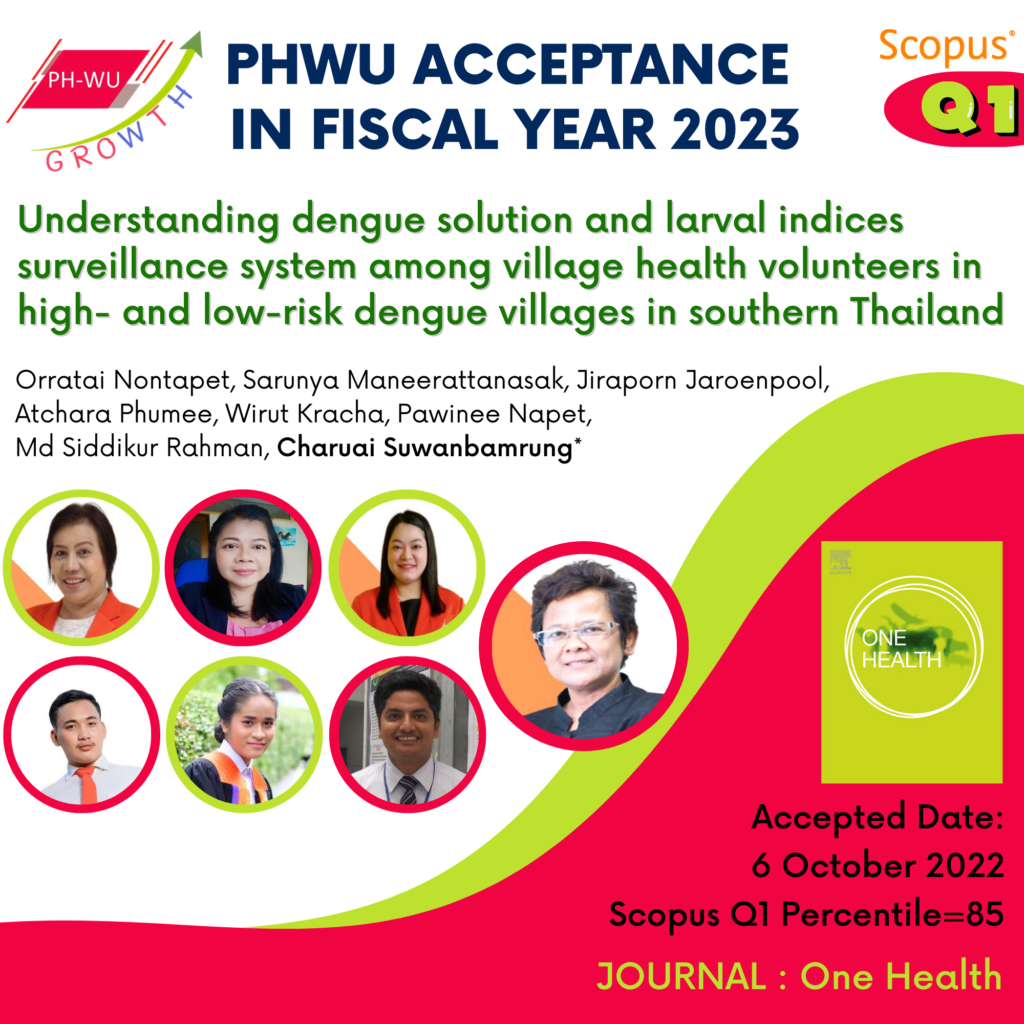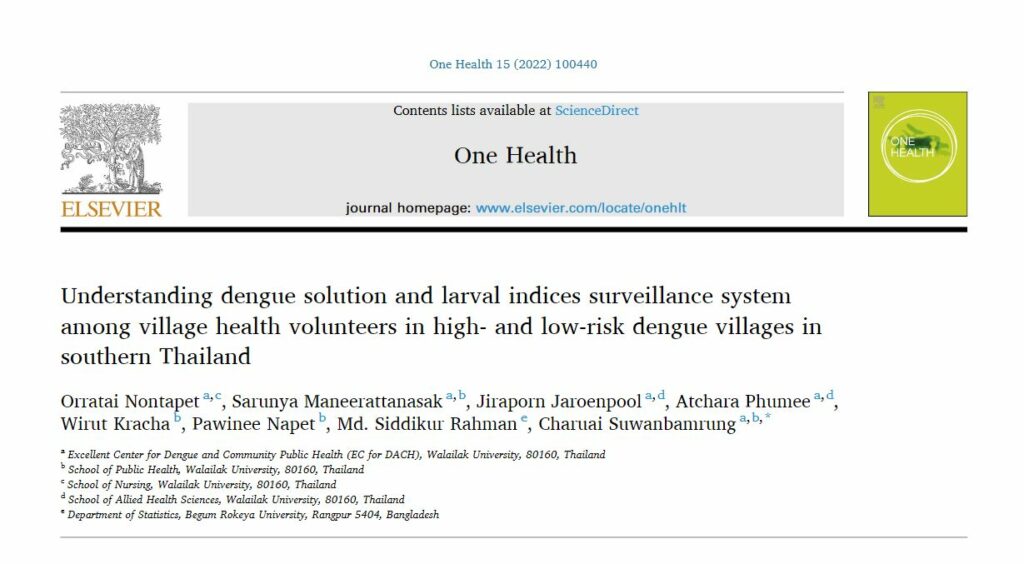
ABSTRACT
Background: Successful dengue solutions require community collaboration between agencies engaged in human health, vector control and the environment. In Thailand, village health volunteers emphasize the need for a health working group to interact, collaborate, and coordinate actions. The objectives of this study were to acquire an understanding of dengue solutions, as well as the larval indices surveillance system of village health volunteers in high- and low-risk dengue villages.
Methods: After 12 months of training in dengue prevention and setting larval indices surveillance systems, an analytical cross-sectional survey was conducted. A total of 117 villages were included in the 18 primary care facilities within one district in southern Thailand, and they were divided into 71 high-risk and 46 low-risk dengue villages. Sample size was determined using the G*power formula. The content validity index and reliability values of Cronbach’s alpha coefficient for the questionnaires were 0.91 and 0.83, respectively. A random sampling approach was used to acquire data. The chi-square test, t-test, and odds ratio were used to assess the sample’s level of understanding.
Results: The study included 1,302 village health volunteers, including 895 and 407 from high- and low-risk dengue communities, respectively. In total, 87.9% were female, 51.6% were 20–35 years old, 48.8% had worked as a village health volunteer for 11–20 years, 27.1% had an upper elementary education, and 59.1% had dengue in the previous 12 months. Understanding of the dengue solution and larval indices surveillance system varied across high- and low-risk dengue villages. Village health volunteers with a high level of understanding of the dengue solution and larval indies surveillance system were 1.064 and 1.504 times more likely to stay in high-risk dengue villages, respectively (odds ratio [OR]=1.064, 95% confidence interval [CI]:0.798–1.419, p=0.672 and OR=1.504, 95% CI:1.044–2.167, p=0.028).
Conclusions: Village health volunteers require ongoing training to understand the prevention and control of dengue and larval indices surveillance systems, promote awareness, and monitor dengue in both high- and low-risk dengue villages.
Keywords: Dengue prevention and control; Larval indices surveillance system; High and low-risk dengue village; Village health volunteer; Primary care unit

